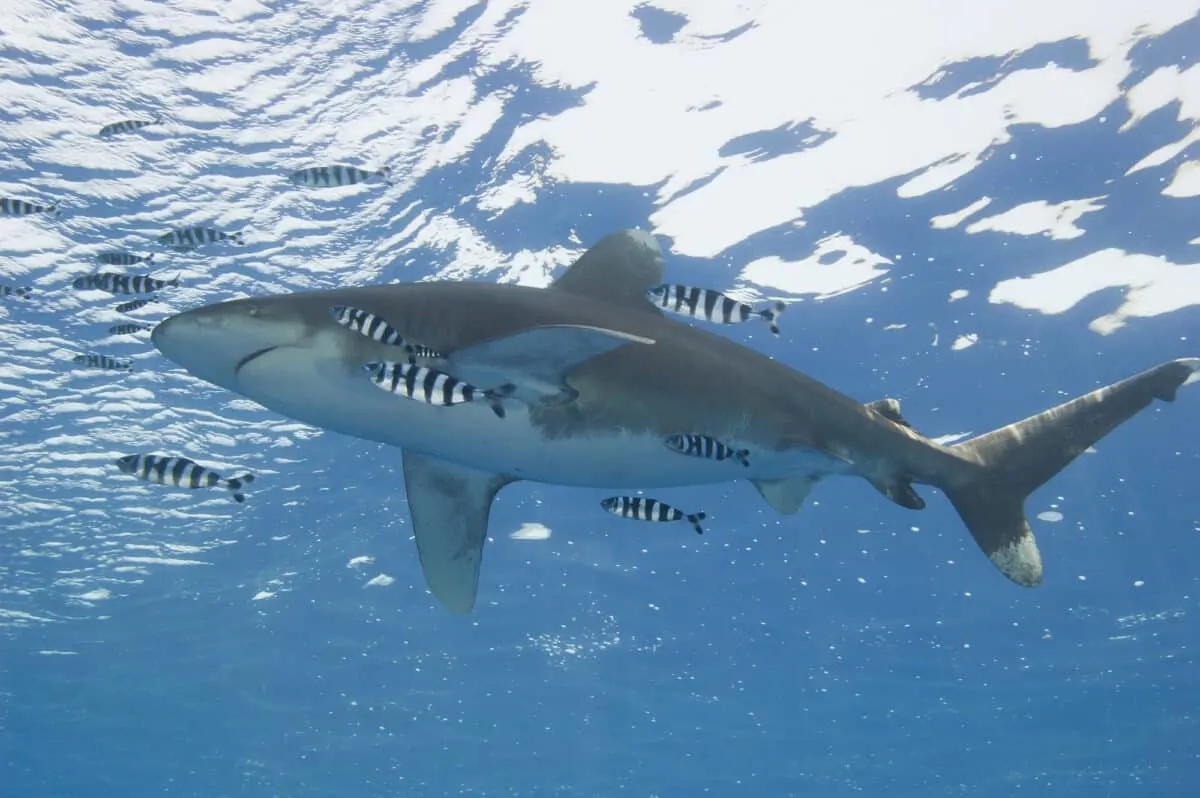Welcome to the exploration of the Great White Shark Vs. Oceanic Whitetip Shark! Let’s witness these two sharks going head to head in this enticing comparison.
Two formidable creatures reign supreme in the vast expanse of the ocean, where the depths conceal mysteries and untamed predators lurk. The oceanic giants, the apex predators that command respect and fear, are the Great White Shark and the Oceanic Whitetip Shark.
These legendary beasts possess awe-inspiring power and tenacity, making them the focus of our thrilling encounter today. Join us as we dive into the ocean’s depths to explore the battle between these titans.
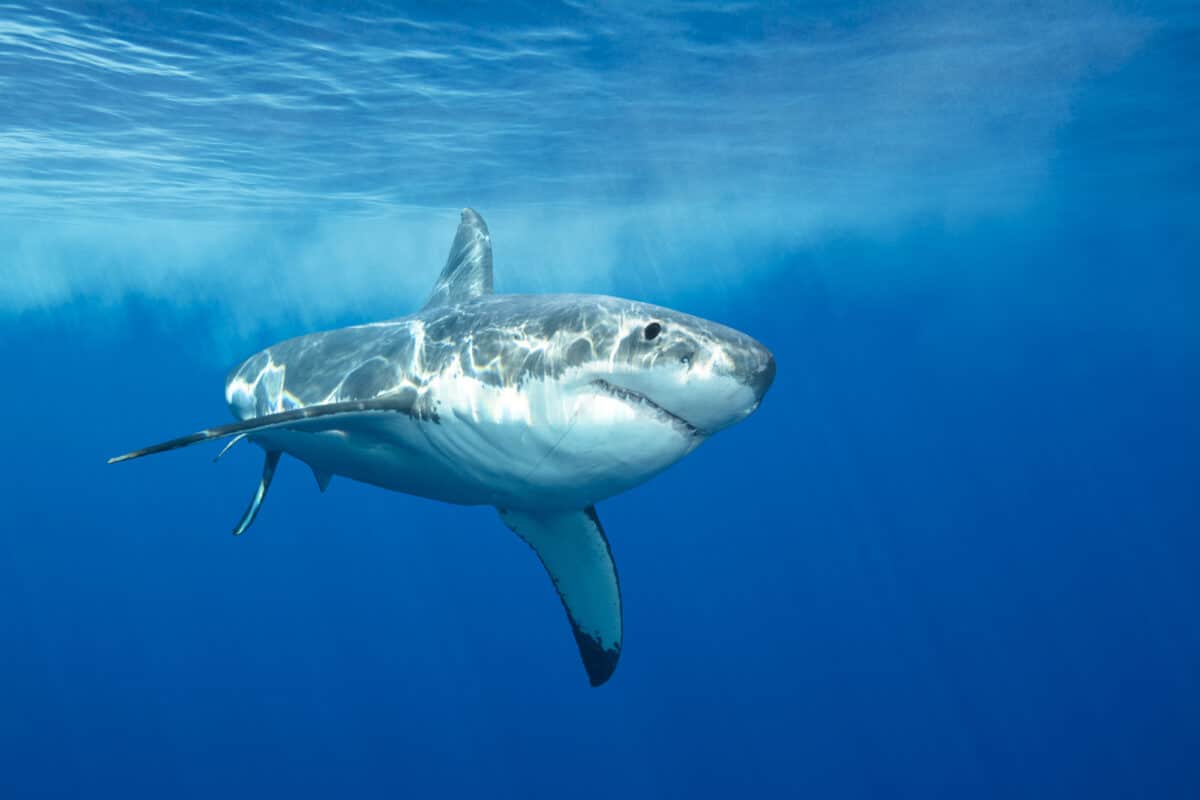
Key Points
| The oceanic giants, the apex predators that command respect and fear, are the Great White Shark and the Oceanic Whitetip Shark. |
| The Great White Sharks streamlined physique allows them to reach staggering speeds of up to 35 miles per hour, enabling them to surprise their prey with lightning-fast bursts of acceleration. |
| The Oceanic Whitetip’s body is stout and robust, designed for endurance rather than speed. Ranging in size from 8 to 13 feet, these sharks are known for their relentless pursuit of prey. |
| The Great White Shark relies on speed, agility, and sensory acuity to stalk its prey, while the Oceanic Whitetip employs endurance and opportunism to assert its dominance. |
| The Great White Shark and the Oceanic Whitetip Shark face numerous threats, including overfishing, habitat degradation, and climate change. These challenges imperil the delicate balance of our oceans and the survival of these majestic creatures. |
Want to jump ahead? Click below
Comparison Table
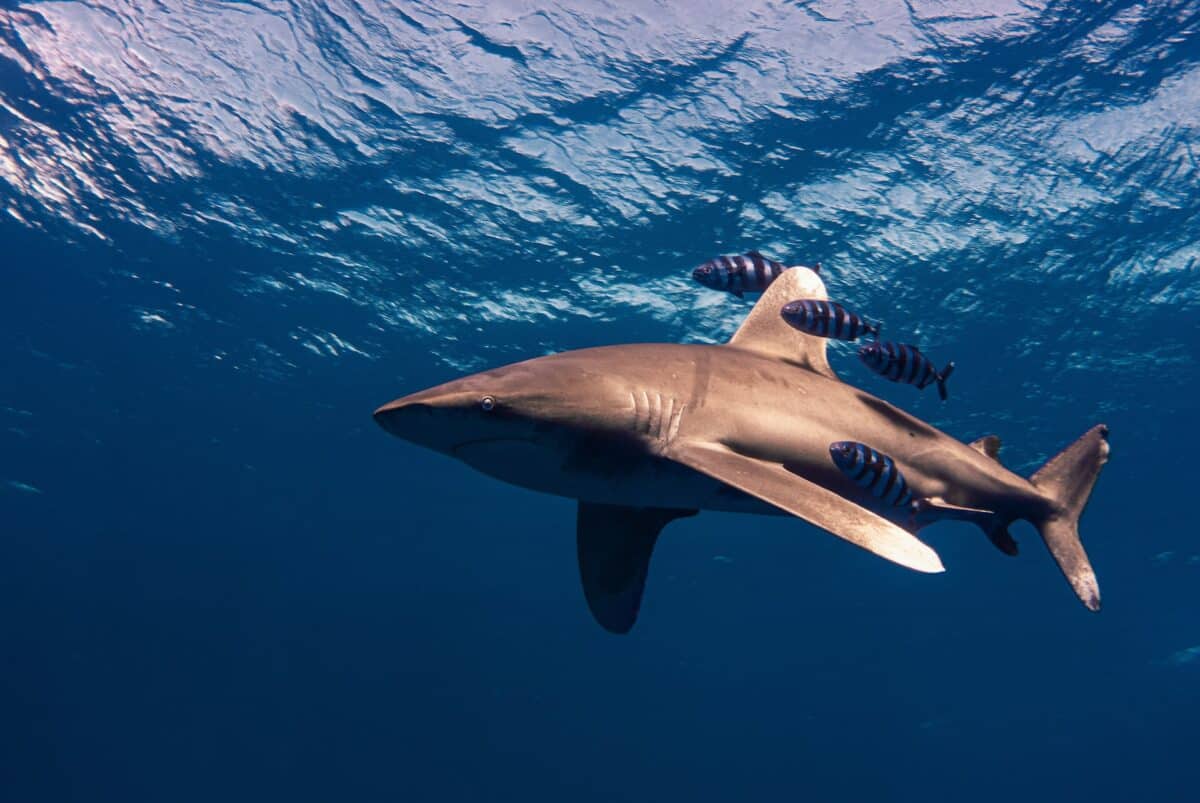
| Traits | Great White Shark | Oceanic Whitetip Shark |
|---|---|---|
| Size | Up to 20 feet long | 8 to 13 feet long |
| Body Shape | Sleek and streamlined | Stout and robust |
| Hunting Grounds | Near coastlines | Deep waters of the open ocean |
| Speed | Up to 35 miles per hour | Relies on endurance |
| Prey | Marine mammals, fish, dolphins | Fish, squid, turtles, seabirds |
| Hunting Strategy | Stealth and ambush from below | Relentless pursuit of prey |
| Conservation Efforts | Marine protected areas, regulations | Marine protected areas, regulations, research initiatives |
| Threats | Overfishing, habitat degradation, climate change | Overfishing, habitat degradation, climate change |
| Interaction with Humans | Can be dangerous, unprovoked | Generally not targeted at humans |
Unveiling the Great White Shark
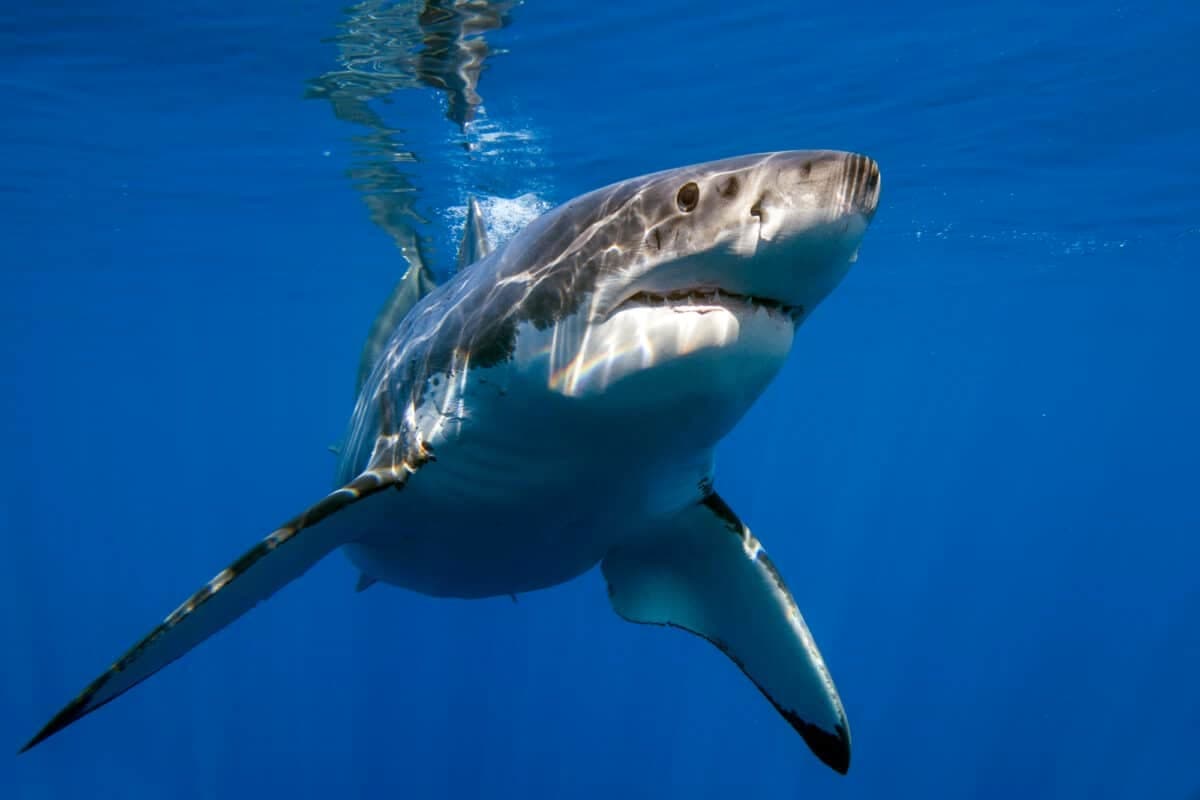
With its sleek and robust body, the Great White Shark is a marvel of nature. This iconic predator strikes fear into the hearts of many, known for its immense size and razor-sharp teeth.
Growing up to 20 feet long and weighing 7,000 pounds, these majestic creatures are masters of the hunt. Their streamlined physique allows them to reach staggering speeds of up to 35 miles per hour, enabling them to surprise their prey with lightning-fast bursts of acceleration.
Regarding habitat, Great White Sharks prefer to stay near the coast and can be found in shallow and deeper offshore waters. They often inhabit areas with a large prey concentration, such as seals, sea lions, and fish. They also have sharp, serrated teeth ideal for hunting and consuming prey.
With its acute sense of smell and electroreception, it can detect the faintest trace of blood from miles away. These mighty hunters predominantly feed on marine mammals, such as seals and sea lions, but they are not opposed to devouring fish, dolphins, and even other sharks. Their hunting technique, known as “breaching,” is a jaw-dropping spectacle as they propel their massive bodies out of the water to capture unsuspecting prey.
Unleashing the Oceanic Whitetip Shark
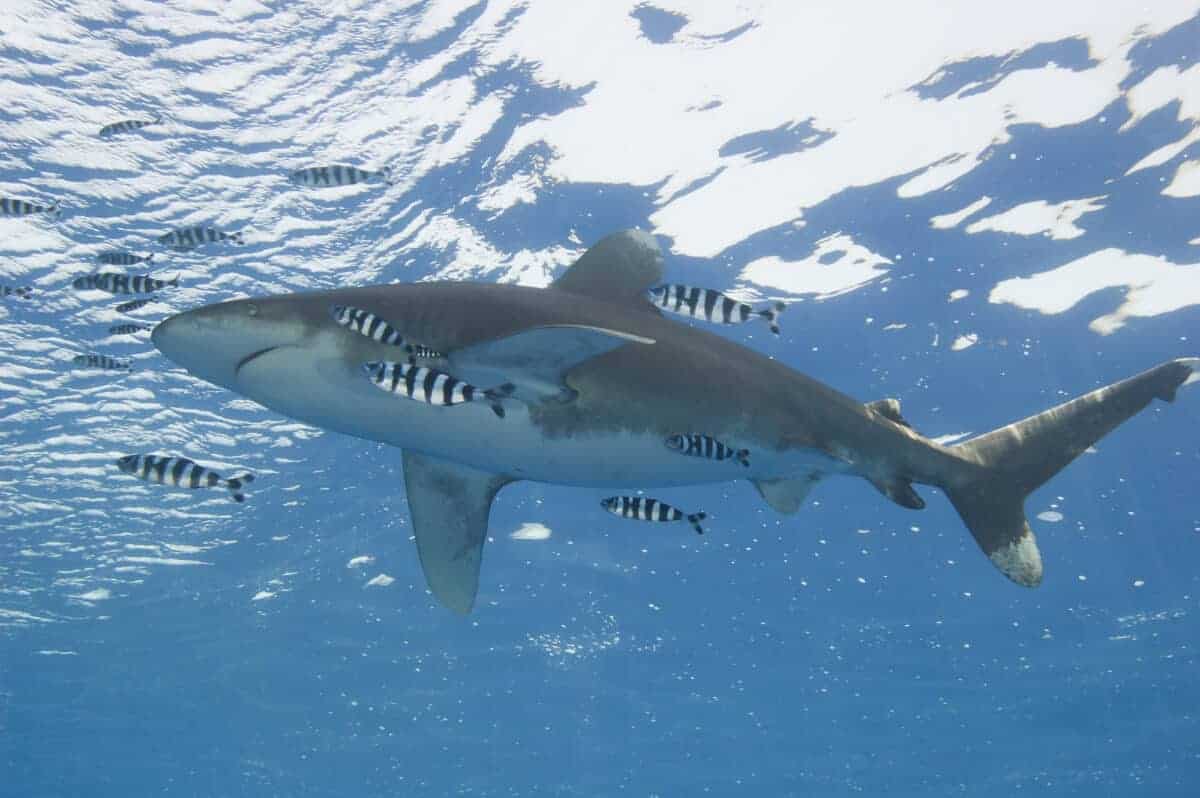
As the spotlight shifts, we encounter another oceanic giant: the Whitetip Shark. Although lesser-known than its famous counterpart, the Oceanic Whitetip is no less formidable. Its distinctive white-tipped dorsal fin sets it apart, indicating its presence in the open ocean.
Unlike the Great White Shark, the Oceanic Whitetip’s body is stout and robust, designed for endurance rather than speed. Ranging in size from 8 to 13 feet, these sharks are known for their relentless pursuit of prey.
Their preferred hunting grounds are the deep waters of the open ocean, far from the shorelines. Their reputation as opportunistic scavengers precedes them as they feast upon anything they encounter.
The Oceanic Whitetip is not one to turn down an easy meal, devouring fish, squid, turtles, and even seabirds with its powerful jaws.
Head-to-Head: Comparing Traits and Tactics
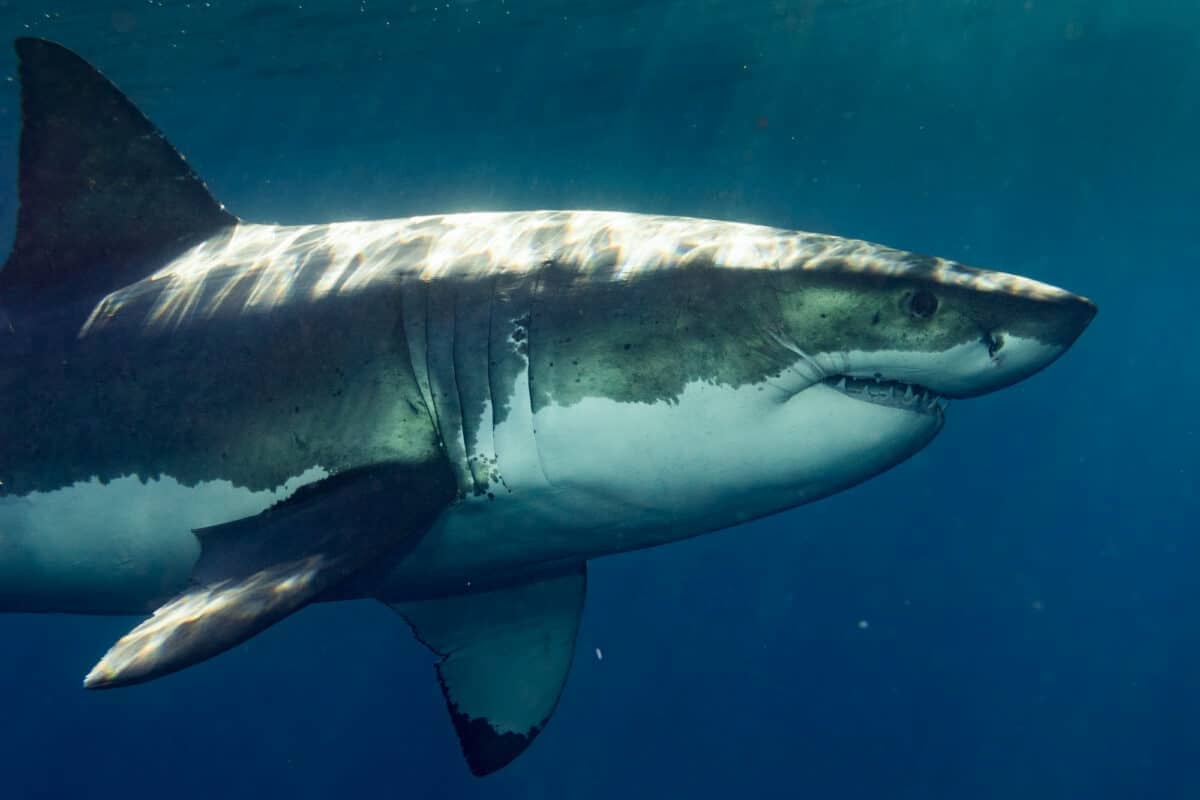
When these two apex predators clash, it’s a clash of strategies and adaptations. The Great White Shark relies on speed, agility, and sensory acuity to stalk its prey, while the Oceanic Whitetip employs endurance and opportunism to assert its dominance.
In terms of physical attributes, the Great White Shark’s streamlined body and powerful bite force make it an expert hunter of marine mammals. Conversely, the Oceanic Whitetip’s stout body and strong pectoral fins enable it to cruise tirelessly through the open ocean, pursuing schools of fish with unwavering determination.
While the Great White Shark tends to hunt closer to the shorelines, the Oceanic Whitetip ventures into the vast blue expanses. Their different hunting grounds influence their behavior and tactics.
The Great White Shark relies on stealth and ambush, often launching surprise attacks from below. On the other hand, the Oceanic Whitetip demonstrates its endurance by relentlessly pursuing its prey over long distances, using its intimidating presence to secure its meals.
If you’re interested in learning more about the different types of dangerous sharks, click here!
Conservation and Preservation: A Call to Action
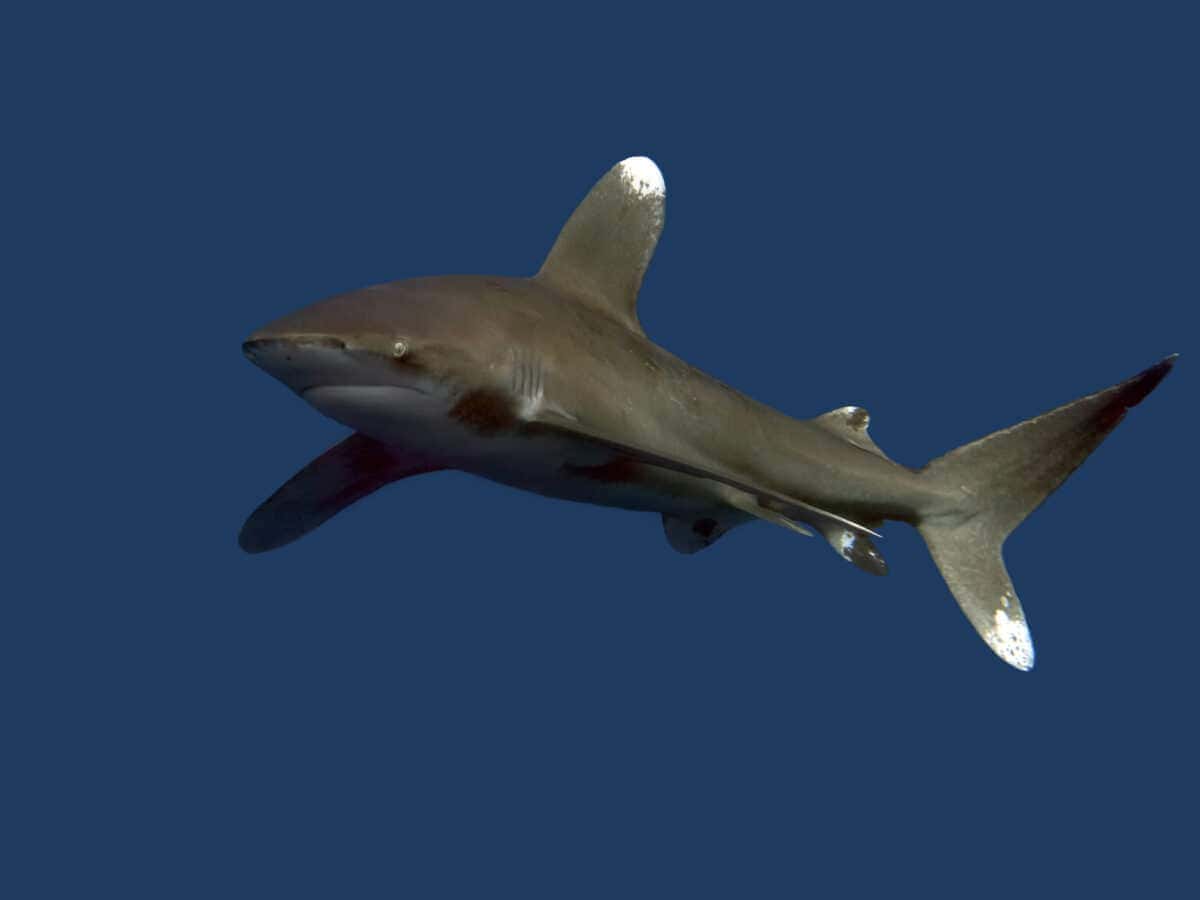
As we marvel at the magnificence of these apex predators, we must also confront the pressing issue of their conservation. The Great White Shark and the Oceanic Whitetip Shark face numerous threats, including overfishing, habitat degradation, and climate change. These challenges imperil the delicate balance of our oceans and the survival of these majestic creatures.
Various conservation efforts are underway to ensure the preservation of these apex predators. Marine protected areas, fishing regulations, and research initiatives are crucial to safeguarding their habitats and populations.
FAQ’s
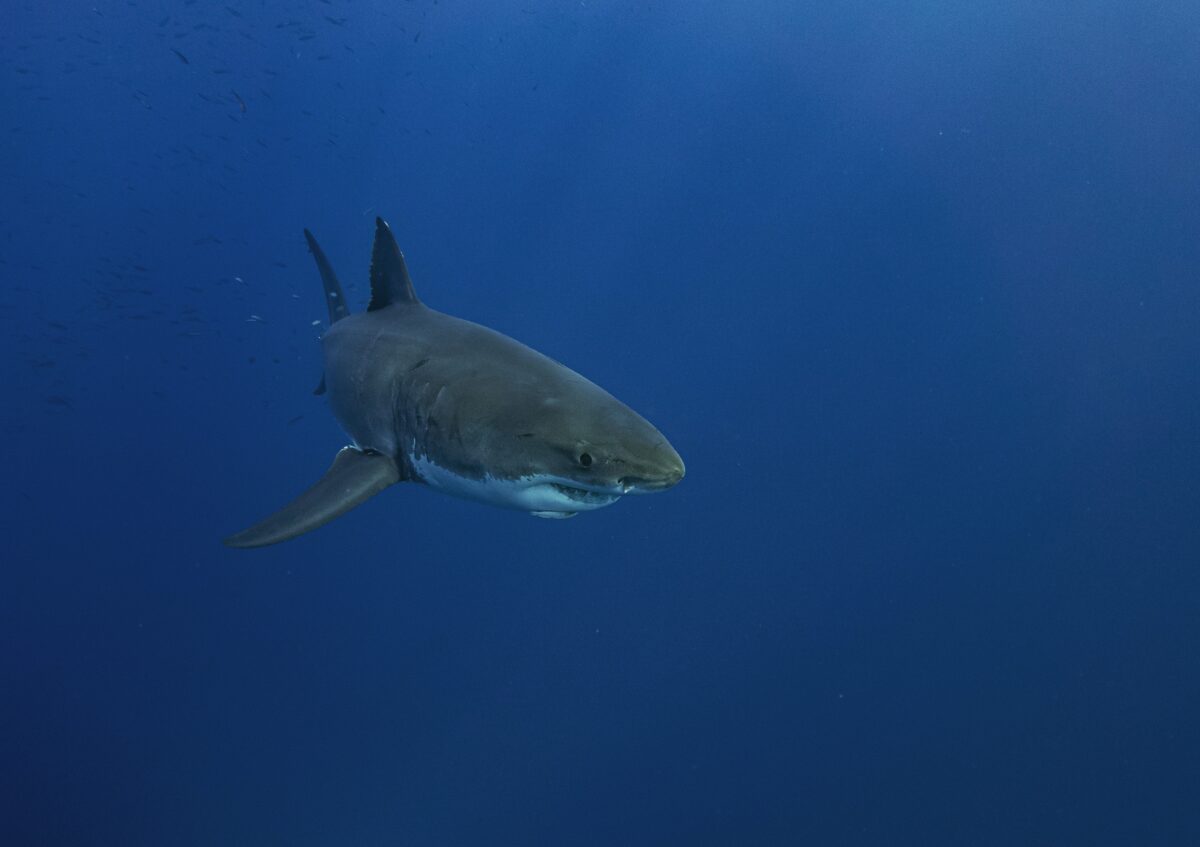
Q1. Are Great White Sharks and Oceanic Whitetip Sharks Dangerous to Humans?
Great White Sharks and Oceanic Whitetip Sharks are formidable predators, but their interactions with humans differ. However, caution should always be exercised when encountering any shark species, as they are wild animals and can exhibit unpredictable behavior.
Q2. How Do Great White Sharks and Oceanic Whitetip Sharks Differ Regarding Habitat?
Great White Sharks prefer temperate and calm waters, where their prey, such as seals and sea lions, are abundant. In contrast, Oceanic Whitetip Sharks are more commonly found in the open ocean, particularly in deep waters far from shore. They are widely distributed and can be found in tropical and subtropical regions.
Q3. What Conservation Efforts Are in Place to Protect Great White Sharks and Oceanic Whitetip Sharks?
Conservation measures for Great White Sharks and Oceanic Whitetip Sharks include establishing marine protected areas, regulations on shark fishing, and initiatives to reduce bycatch. Research and monitoring programs also provide valuable data to inform conservation strategies and management efforts.
Wrapping Up with Great White Shark Vs. Oceanic Whitetip Shark
In the age-old battle for dominance beneath the waves, the Great White Shark and the Oceanic Whitetip Shark have carved out their respective niches. Each possesses unique traits, tactics, and hunting strategies that allow them to thrive in their oceanic realms.
While the Great White Shark captivates quickly and precisely, the Oceanic Whitetip mesmerizes with its relentless pursuit and resilience.
As we delve deeper into the underwater realm, we are reminded of our responsibility to protect these apex predators. Their existence is essential for maintaining the delicate balance of our oceans and also a testament to the wonders of nature.
Let’s unite in our efforts to preserve these wonderful animals, allowing future generations the opportunity to marvel at their majestic presence in the vast and mysterious depths of the ocean.
Next up:
- American Black Bears Vs. Nile Crocodiles
- Fearsome Saw-Scaled Viper Bite
- Great White Sharks Vs. Saltwater Crocodiles
- Feral Cat Finds Comfort In A Tiny Home Built Just For Him In California - April 26, 2024
- Watch 5-Foot Lancehead Snake Set New Size Milestone - April 26, 2024
- Watch Rare Encounter: The Largest King Cobra in Action in Thailand - April 26, 2024

